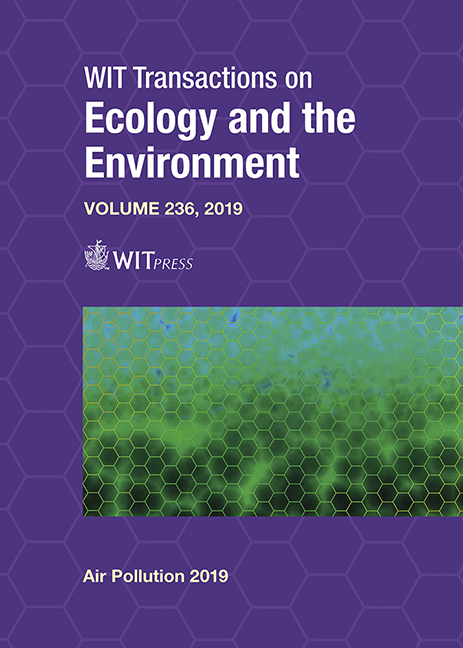REGRESSION MODELLING FOR PREDICTING VISIBILITY IN A TROPICAL URBAN ENVIRONMENT
Price
Free (open access)
Transaction
Volume
236
Pages
9
Page Range
149 - 157
Published
2019
Size
434 kb
Paper DOI
10.2495/AIR190151
Copyright
WIT Press
Author(s)
SAVITHA ULAVI, SARAGUR MADANAYAK SHIVA NAGENDRA
Abstract
Air pollution and visibility reduction is a major concern in cities. The present study focused on understanding the impact of air quality and meteorology on visibility impairment for a tropical coastal city (Chennai, India). Visibility measurements were carried out for 176 days representing summer, winter and post-monsoon season. The meteorological and air quality parameters for the study period were taken from the nearest continuous monitoring station supervised by the Central Pollution Control Board of India (located within 2 km of the visibility monitoring site). It was found that the average visibility experienced by the city is 11.24 ± 5.47 km. The seasonal variations in the data monitored showed maximum average visibility (15.06 ± 2.87 km) during summer, followed by winter (7.64 ± 3.53) and post-monsoon season (5.80 ± 2.72). The stepwise linear regression model was developed to predict visibility. The model developed for winter showed PM2.5 is the significant predictor with reasonable R2 value of 0.68. It was observed that there is a strong negative correlation between fine particulate matter (PM2.5) and visibility. During summer ozone, PM2.5, wind speed, relative humidity, oxides of nitrogen (NOx) turned out to be the significant predictors for visibility and Pearson correlation showed inverse correlation between visibility and ozone (-0.683), as well as PM2.5 (-0.587). Thus the model developed for summer was able to capture the photochemistry of the summer and explained 71% variation in visibility. The number of low visibility events (< 2 km) were estimated for different seasons excluding fog events (RH > 90). The results showed large numbers of low visibility events in winter (348) followed by post-monsoon (205). The results also indicated that haze events increased with an increase in particulate matter concentration (> 60 μg/m3), RH (> 65) and decrease in wind speeds (< 1 m/s).
Keywords
air pollution, regression, meteorology, visibility reduction





